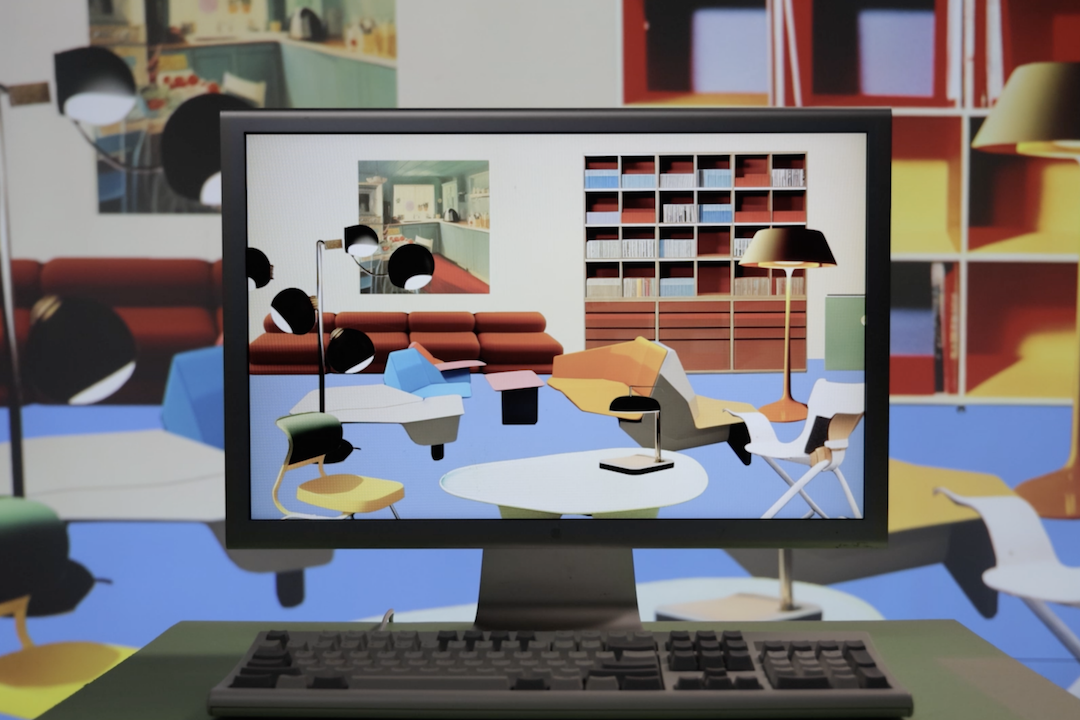IKEA Experimenters Work With Generative AI To Design Furniture Of The Future
By Mikelle Leow, 27 Mar 2023

With the evolution of tools like ChatGPT and DALL-E, artificial intelligence has taken up more space in our everyday lives than ever before—sometimes giving people the building blocks to perfect their ideas, and other times offering up complete products.
This sort of creativity and immediacy fits right into IKEA’s model of yielding high outputs at low prices, so it wouldn’t be a surprise if it decided to make generative AI an in-house designer one day. For now, this is just a dream. The Swedish furniture giant does get vastly imaginative now and then via its experimental design lab SPACE10; and with the latter engaged to envision the IKEA of tomorrow, it is well-suited to dabble in the new but promising realm of AI-generated designs.
SPACE10 has been looking into how AI may figure into the world of creativity. For one of its projects, it teamed up with video journalist Joss Fong and art director Áron Filkey to evaluate how AI art generators could inspire furniture design.
Rather than getting bots to dream up IKEA products from scratch, Fong and Filkey fed the popular image generator Stable Diffusion with photos from IKEA catalogs of the 1970s and 1980s to guide the machine along.
The initiative allowed the team to embark on “a unique collaboration with furniture designers from the past to imagine new, vintage-inspired designs and interiors for the digital age,” SPACE10 details.
With this dataset, the AI got an idea of what the designers were looking for, and it churned out images of furniture with a groovy, rounded vibe—à la the 70s—as well as pieces with cleaner structures, alluding to the 80s. As with IKEA products past and present, these iterations also appear to be friendly for smaller spaces, Fast Company points out.
How might we use generative AI to create future design classics?
— SPACE10 (@space10_journal) March 13, 2023
These were two questions recently explored by video journalist @JossFong and designer Áron Filkey for SPACE10. pic.twitter.com/Cb46fN3d4Q
The experiment affirms the possibility of conceptualization being “democratized” among anyone involved in the design process, says IKEA’s artificial intelligence technology innovation lead Sebastian Welter.
Also, the company could be sitting on a gold mine with these concepts based on 70s and 80s designs. Vintage IKEA wares have been objections of affection between many furniture collectors, who have spilled five-figure sums on chairs that would have been affordably priced back in the day.
By teaching a text-to-image model what @IKEA furniture looked like in the 1970s and 1980s, they powered a unique collaboration with furniture designers from the past to imagine new, vintage-inspired designs and interiors for the digital age.#ai #generativeai pic.twitter.com/Q9xp1CVvA1
— SPACE10 (@space10_journal) March 13, 2023
All told, as much as the project fawns at the opportunities, it also examines the cons of relying on generative AI. Since the machine primarily focuses on the aesthetic side of things, there were occasions when it generated furniture that was unusable for the real world.
Some chairs lacked structural integrity, while others had missing legs. Being no stranger to recalls of products that have even resulted in some casualties, IKEA should still err on the side of caution when working with such tools.
“We’ll always need human expertise to decide what to build, but AI can help designers brainstorm many more initial directions than they would otherwise,” Fong concludes in a statement.
Keeping in line with the theme of AI and creativity, the crew also put together a short film that was visualized, scripted, and narrated by AI, suggesting its other implications in IKEA’s copywriting and the like.
According to the news outlet, SPACE10 is continuing to keep an open mind about machine learning’s role in interior and architectural design, and the lab plans to launch an AI design competition in the foreseeable future.
IKEA itself has taken a trust fall in the arms of automation. Not only has it hired drones to track inventory in its stores across the world, but it also intends to deploy robots to pick up goods, among other things.
The use of high-tech solutions is a “genuine win-win for everybody,” proclaims Tolga Öncu, Head of Retail at IKEA’s parent company Ingka Group, who believes that co-existing with machines at work “improves our co-workers’ wellbeing, lowers operational costs, and allows us to become more affordable and convenient for our customers.”
[via Fast Company and SPACE10, images via SPACE10]





